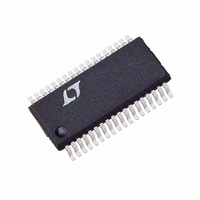LTC1759CG Linear Technology, LTC1759CG Datasheet - Page 25

LTC1759CG
Manufacturer Part Number
LTC1759CG
Description
IC SMART BATTERY CHARGER 36SSOP
Manufacturer
Linear Technology
Datasheet
1.LTC1759CGPBF.pdf
(28 pages)
Specifications of LTC1759CG
Function
Charge Management
Battery Type
Smart Batteries
Voltage - Supply
11 V ~ 24 V
Operating Temperature
0°C ~ 70°C
Mounting Type
Surface Mount
Package / Case
36-SSOP (0.200", 5.30mm Width)
Lead Free Status / RoHS Status
Contains lead / RoHS non-compliant
Available stocks
Company
Part Number
Manufacturer
Quantity
Price
Company:
Part Number:
LTC1759CG
Manufacturer:
LT
Quantity:
4 071
Part Number:
LTC1759CG
Manufacturer:
LINEAR/凌特
Quantity:
20 000
Part Number:
LTC1759CG#PBF
Manufacturer:
LINEAR/凌特
Quantity:
20 000
Part Number:
LTC1759CG#TR
Manufacturer:
LT/凌特
Quantity:
20 000
Part Number:
LTC1759CG#TRPBF
Manufacturer:
LTNEAR
Quantity:
20 000
APPLICATIONS
voltage will be pulled down by the constant 30W load until
it reaches a lower stable state where the switching regu-
lators can no longer supply full load. This situation can be
prevented by utilizing the DCDIV resistor divider, set
higher than the minimum adapter voltage where full power
can be achieved.
Input and Output Capacitors
In the 4A Lithium Battery Charger (Figure 10), the input
capacitor (C14) is assumed to absorb all input switching
ripple current in the converter, so it must have adequate
ripple current rating. Worst-case RMS ripple current will
be equal to one half of output charging current. Actual
capacitance value is not critical. Solid tantalum low ESR
capacitors have high ripple current rating in a relatively
small surface mount package, but caution must be used
when tantalum capacitors are used for input or output
bypass . High input surge currents can be created when the
adapter is hot-plugged to the charger or when a battery is
connected to the charger. Solid tantalum capacitors have
a known failure mechanism when subjected to very high
turn-on surge currents. Only Kemet T495 series of “Surge
Robust” low ESR tantalums are rated for high surge
conditions such as battery to ground.
The relatively high ESR of an aluminum electrolytic for
C15, located at the AC adapter input terminal, is helpful in
reducing ringing during the hot-plug event.
Highest possible voltage rating on the capacitor will mini-
mize problems. Consult with the manufacturer before use.
Alternatives include new high capacity ceramic (at least
20 F) from Tokin, United Chemi-Con/Marcon, et al. How-
ever, using ceramic capacitors in the output filter of the
charger can lead to acoustic noise radiation that can be
confused with instability. At low charge currents, the
charger operates in discontinuous current mode at an
audible frequency. Other alternative capacitors include
OSCON capacitors from Sanyo.
The output capacitor (C3) is also assumed to absorb
output switching current ripple. The general formula for
capacitor current is:
U
INFORMATION
U
W
U
For example, V
f = 200kHz, I
EMI considerations usually make it desirable to minimize
ripple current in the battery leads, and beads or inductors
may be added to increase battery impedance at the 200kHz
switching frequency. Switching ripple current splits be-
tween the battery and the output capacitor depending on
the ESR of the output capacitor and the battery imped-
ance. If the ESR of C3 is 0.2 and the battery impedance
is raised to 4 with a bead or inductor, only 5% of the
current ripple will flow in the battery.
Charger Crowbar Protection
If V
shorted (crowbarred) to ground, then a small
P-channel FET M4 should be used to fast turn off the input
P-channel FET M3 (see Figure 11), otherwise, high surge
current might damage M3. M3 can also be replaced by a
diode if dropout voltage and heat dissipation are not
problems.
Note that LT1759 will operate even when V
If V
quickly (crowbarred) from a high battery voltage, slow
loop response may allow charge current to build up and
damage the topside N-channel FET M1. A small diode D5
(see Figure 12) from SDB pin to V
switching and protect the charger.
Note that M4 and/or D5 are needed only if the charger
system can be potentially crowbarred.
Protecting SMBus Inputs
The SMBus inputs, SCL and SDA, are exposed to uncon-
trolled transient signals whenever a battery is connected
to the system. If the battery contains a static charge, the
SMBus inputs are subjected to ESD which can cause
damage after repeated exposure. Also, if the battery’s
positive terminal makes contact to the connector before
the negative terminal, the SMBus inputs can be forced
I
IN
RMS
BAT
connector of Figure 1 charger can be instantaneously
of Figure 1 charger gets shorted to ground very
=
0.29 (V
RMS
CC
(L1)(f)
= 0.6A.
= 19V, V
BAT
) 1 –
BAT
V
V
BAT
CC
= 12.6V, L1 = 10 H, and
BAT
BAT
will shut down
LTC1759
is grounded.
25











